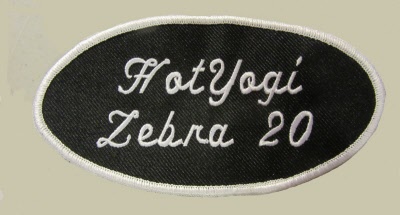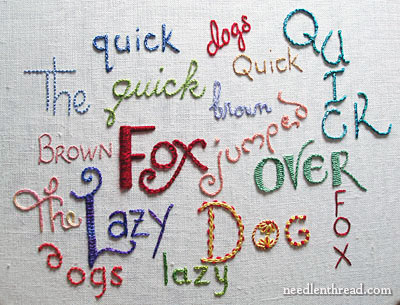Work Shirt Patch Font
The following guidelines are important to remember when measuring for proper fit. For the most accurate results, measure yourself in your undergarments. Give all measurements in inches.
If your measurements are between sizes, order the larger size. For greatest accuracy, have someone take your measurements rather than yourself. The tape measure should be pulled snug, not tight.
Check the size scale of all garments being ordered to ensure that all measurements were taken at the proper points. Pants, Jeans & Bib Overalls. Waist: Measurement is taken at the top of the hipbone over shirt (not over pants). Tape should only be held snug, do not hold tape tight. Inseam: Measure from the base of the crotch to the top of the shoe or boot. For jeans, add one inch.
Custom Work Shirts and Embroidered Work Shirts. Design custom work shirts from top brands like Dickies and Red Kap that can stand up to the. T-Shirt Design.
Chest: Measure around the fullest part of your chest, keeping tape firmly under your armpits and around your shoulder blades. Hold tape level and firmly but not tight. NOTE: It is advisable to ask the person being measured how he or she wears their pants. Not everyone wears their pants or jeans the same length or height on their hips. Shirts & Coveralls. Neck: Measurement is measured around the base of your neck, inserting your forefinger between the tape and your neck to allow ease in fit.

Sleeve Length: Bend your arm slightly. Measure by placing one end of the tape at the bottom of the collar at the center back and mark the distance around the elbow to the bottom of the wrist.

Chest: Measure around the fullest part of your chest, keeping tape under your armpits and around your shoulder blades. Hold tape level and firmly but not tight.

- Find great deals on eBay for Name Patch in Sewing Patches. Work Shirt Name Patches. This is a Sew on Patch. 5 - Style of font from list below.
- Military patch 1X4 with customized fonts. Menu Find; 0; Stitch A Logo Custom Embroidery No Minimums! Order your the Work Shirt with Sewn Name Patch today!
Jackets. Chest: Measure around the fullest part of your chest, keeping tape under your armpits and around your shoulder blades.This measurement should be taken over clothing, preferably over garments or types of garments to be worn with the jacket. Sleeve Length: Bend your arm slightly. Measure by placing one end of the tape at the bottom of the collar at the center of the back and marking the distance around the elbow to the bottom of the wrist.
Need a club patch, having a sports tournament, want a great fundraiser? LogoSportswear offers embroidered patches from the finest materials available. These custom emblems are durable enough to be washed and/or dry cleaned numerous times and can be applied to almost any wearable.
Excellent for promoting organizations, teams, and tournaments, or for displaying corporate logos, awards, and insignias. We can offer short runs of less than (100) custom patches and two-to-three week rush service available. $1.48 Size Requirements and Options All type must be at least 3/16' high on twill background or 1/4' high on thread background. For heat cut, tapered, scalloped, or cut-out shapes, please add 25% to the unit cost. For adhesive or felt backing, please add 25% to the unit cost.
For light bleach resistant and colorfast threads, please add.10 (P) to the unit cost. Add 25% to the unit price for metallic thread or neon thread. Up to 7 colors included in listed prices. For each additional color, add.20 (P) to unit price. Add.10 (P) per inch for glue back. Custom Patch Sizes To determine the proper size category, add the width and the height together and divide by 2. EXAMPLE: The emblem measures 2' x 4' 2 + 4 = 6 divided by 2 = 3' Important Note: Fractional results 1/8' or larger round up to the next size category.
Fractional results less than 1/8' round down. EXAMPLE A: 3 3/8 + 3 = 6 3/8 divided by 2 = 3 3/16 Use the 3 ½' price. EXAMPLE B: 2 5/8 + 3 ½ = 6 1/8 divided by 2 = 3 1/16 Use the 3' price. General Tips for Creating Graphics for Embroidered Patches 1. Bolder is better.
Free Fonts For T Shirts
Keep in mind that bold letters and design elements embroider better and are more visible for your custom patch. Strong contrast is better Strong contrast is better than light on light or dark on dark colors. Open block lettering is more legible.
Narrow type styles, condensed letter does not embroider well. Tall and Skinny Font Styles are to be avoided. Squat and Bold (not extra bold) are preferable. Other type styles that embroider well are, Simple Script, bold font styles with serifs, Free Hand Styles, and many other styles that conform to this concept. Blank Spaces are Boring.
Effective use of space for your custom patch is important. Enlarging graphic elements, extending and/or enlarging text, and introducing other graphic elements, are ways to better utilize blank space. Most geometrically simple embroidered emblems (circles, ovals, rectangles, triangles, rhomboids, trapezoids, egg shapes, pill shapes, tombstone shapes, simple shields) have a ravel proof (overlock) border applied to the edge after the emblem is die cut. Allow 1/8 inch along the outer edge of the emblem for the overlock border.
IMPORTANT - 3/32' of space must be allowed between any concentric elements and/or lettering running parallel to the border. Geometrically simple custom emblems (circles, ovals, rectangles, triangles, rhomboids, trapezoids, egg shapes, pill shapes, tombstone shapes, simple shields) and geometrically complex emblems ( badge shapes, arrow heads, crescent shapes, chevron shapes, free forms) that have an embroidered border applied and are subsequently hand cut or hot needle cut, the following rules apply.
Allow a minimum 1/16' inch along the outer edge of the emblem for the embroidered border. IMPORTANT - 1/16' of space must be allowed between any concentric elements and/or lettering running parallel to the border. Bleeds - Design elements (backgrounds fills, landscapes, bars, clouds, etc.) can bleed into the border. Capture Lines.
Capture lines, usually thin black lines defining graphic details, are difficult to embroider and difficult to keep in registry. Because of the thinness of the capture line, often the only way it can be represented in embroidery is with a stepstitch (running stitch).
A capture line embroidered in stepstitch is a series of short straight stitches going from one needle entry point to another (dot to dot), resulting in a line that is neither smooth or unbroken. Because the line is so thin it is very difficult to embroider it exactly on the edge of a graphic element. Even the slightest displacement will cause the line to wander away from or encroach into the graphic element it is supposed to outline.
Military Patch Font
When evaluating a new graphic, question the need for capture lines are they, some or all, necessary to the graphic? If some or all of them can be removed the end result will be better embroidery. If the graphic source material is black and white, the capture lines (wire frames) are the only way to show the graphic. Example: the black and white (not half-tones) graphic of a fish would be a multitude of black lines on white background, detailing everything from each fish scale, to the eye, to the fin. Done in color, the fish scales would be visibility is at issue, the foregoing is the rule. Exception - the starkest contrast, black on white, is difficult to embroider, many times resulting in poor quality embroidery. Positioning Graphic Elements and Fonts.
Care should be given to the relative position of design elements and fonts. In the embroidery process the needle embroidering must 'travel' from design element or font to another. Consideration should be given to how easily, using the least number of stitches, can the needle embroidering travel to the next element or font to be embroidered.
The proximity of elements and fonts to one another is very important. Having elements that are touching and close in proximity allows them to be connected, with the embroidering needle traveling directly from one element to another. Having elements that are spaced apart does not allow them to be connected, the embroidering needle cannot travel directly from one star to another. In multihead embroidery, for each star spaced far apart, the embroidery machine must stop, trim, move slowly to the next position, and resume stitching. This process is not only time consuming, it is a major cause of defects.